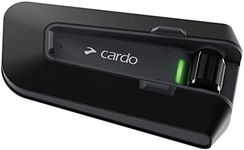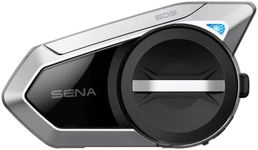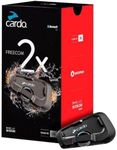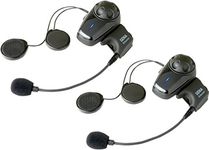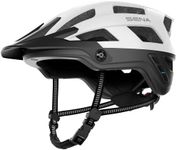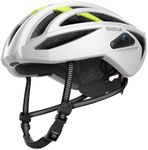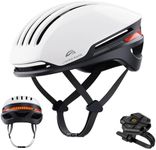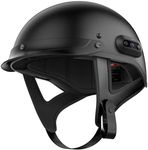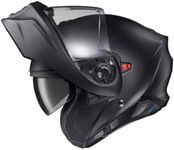Buying Guide for the Best Helmet Communications
Choosing the right helmet communication system can significantly enhance your riding experience, whether you're a motorcyclist, cyclist, or skier. These systems allow you to stay connected with fellow riders, listen to music, receive GPS directions, and even make phone calls without having to stop. To find the best fit for you, it's important to understand the key specifications and how they align with your needs.RangeRange refers to the maximum distance over which the communication system can maintain a connection between users. This is important because it determines how far apart you can be from your riding partners while still being able to communicate. Short-range systems (up to 500 meters) are suitable for casual riders who stay close together, while medium-range systems (up to 1 kilometer) are ideal for small groups. Long-range systems (over 1 kilometer) are best for large groups or those who ride in areas with varying terrain. Consider your typical riding environment and group size when choosing the range.
Battery LifeBattery life indicates how long the communication system can operate on a single charge. This is crucial for ensuring that your device lasts throughout your ride. Short battery life (up to 8 hours) may be sufficient for short trips or daily commutes. Medium battery life (8-12 hours) is better for day-long rides, while long battery life (over 12 hours) is essential for multi-day trips or extended use. Think about the duration of your rides and how often you can recharge the device when selecting battery life.
Number of ConnectionsThis spec tells you how many riders can be connected simultaneously. It's important because it determines the size of the group you can communicate with. Systems that support 2-4 connections are suitable for small groups or pairs, while those that support 5-8 connections are better for medium-sized groups. For large groups, look for systems that support 9 or more connections. Consider the typical size of your riding group when choosing the number of connections.
Audio QualityAudio quality refers to the clarity and fidelity of the sound transmitted and received by the communication system. High audio quality is important for clear communication, especially in noisy environments. Basic systems may offer standard audio quality, which is sufficient for casual use. Mid-range systems provide better clarity and noise reduction, suitable for regular riders. High-end systems offer superior audio quality with advanced noise-canceling features, ideal for professional riders or those who ride in very noisy conditions. Assess your need for clear communication and the typical noise level of your riding environment when considering audio quality.
Ease of UseEase of use encompasses how simple and intuitive the communication system is to operate. This is important because it affects how quickly and safely you can use the device while riding. Basic systems may have simple controls and fewer features, making them easy to use for beginners. Mid-range systems offer more features with slightly more complex controls, suitable for regular users. Advanced systems come with a wide range of features and may require a learning curve, ideal for tech-savvy users. Consider your comfort level with technology and how much you value simplicity versus advanced features when evaluating ease of use.
CompatibilityCompatibility refers to how well the communication system integrates with your helmet and other devices. This is important to ensure that the system fits your helmet properly and works with your smartphone, GPS, or other communication systems. Some systems are designed to fit specific helmet brands or models, while others are more universal. Basic systems may offer limited compatibility, suitable for those with standard helmets and devices. Mid-range systems provide broader compatibility, ideal for users with multiple devices. High-end systems offer extensive compatibility with various helmets and devices, perfect for those who use a range of equipment. Consider your current helmet and devices when choosing compatibility.

